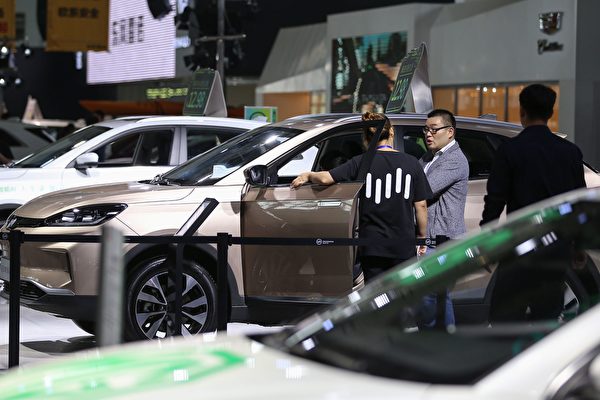The Chinese new energy vehicle industry is currently experiencing an unprecedented wave of consolidation, with well-known companies such as Weima, Nazha, and Gahe going bankrupt one after another. This has left millions of car owners facing a series of problems, including warranty failures, inability to get repairs, diminished resale value of used cars, and a pressing need to address the post-bankruptcy responsibilities left by these collapsed companies.
According to incomplete statistics, the bankruptcy of car companies over the past decade has affected the rights of millions of car owners. From Weima and Gahe to Jiuye and Nazha, the collapse of these new players has not only resulted in empty factories but also left tens of thousands of car owners in post-sale predicaments.
Nazha Motors officially entered bankruptcy proceedings in June of this year, turning their warranty promises for car owners into nothing but “worthless papers.” As reported by “Financial First,” car owner Gao Chang expressed, “Without parts supply at the 4S store, I have to pay out of my pocket to get repairs done at an independent repair shop.”
On September 12th, after the bankruptcy reorganization, Nazha Motors held its first creditors’ meeting, disclosing some figures: 1631 creditors filed claims totaling over 26 billion yuan, with confirmed claims of 5.1 billion yuan. Additionally, the company only has 15.45 million yuan in cash on its books, while also owing over 460 million yuan in salaries to more than 5,000 employees.
Over 400,000 Nazha car owners were taken aback on September 11th when they received a sudden text message stating, “Your car’s network has been disconnected, please self-purchase data.” Due to the suspension of services by the car networking provider, car owners couldn’t use basic functions such as remote control, air conditioning adjustment, and online navigation, unless they paid for data packages to restore regular usage.
The car networking service provider “Lenovo” responded, stating that Nazha Motors had long owed service fees, and after months of unsuccessful negotiations, they were forced to suspend services. This “network disconnection crisis” completely nullified the promised “three years of free data” service by Nazha.
Since 2025, Nazha Motors’ 4S stores in various cities and regions have successively ceased operations, leaving over 400,000 car owners facing issues like warranty failures, difficulties in finding spare parts, and even the rejection of car damage insurance claims.
According to “Financial First,” automotive after-sales expert Song Quanye pointed out that after a car company goes bankrupt, the authorized service system completely crumbles, leading to warranty failures. Car owners are then forced to pay out of pocket at independent repair shops. Due to the high maintenance threshold for new energy cars, many repair shops are hesitant to venture into this area, leaving car owners with no bargaining power and extremely high repair costs.
Car owner Liu Shan faced power battery issues with his Nazha V, and just to inspect the problem at an auto repair shop, he was charged 1,000 yuan even though no repairs were done. Ultimately, he spent 4,000 yuan to complete the repair. He humorously remarked that car owners are like “lambs waiting to be slaughtered.”
Similar predicaments were faced by owners of bankrupt Weima cars. Tencent’s Auto “Bright Light” quoted car owner Huang Ji as saying that the promised lifetime warranty and charging pile installation benefits could not be fulfilled, and the Bluetooth key couldn’t connect to the vehicle, rendering the remote control function completely useless.
Reportedly, insurance renewal has also become a major challenge for car owners. After applying for bankruptcy reorganization, Weima saw a significant doubling of premiums for car owners, with major insurance companies refusing to renew policies, forcing owners to purchase insurance from smaller firms. Car owner Li Lin saw her premium spike from 3,700 yuan to 5,100 yuan and was informed that her vehicle damage insurance couldn’t be renewed.
Weima maintenance technician Zhang He (pseudonym) opened a “Weima special repair” shop, handling repair needs for vehicles from Hebei, Liaoning, Shandong, and other areas daily, providing maintenance services to a fixed group of over 3,000 car owners. He mentioned that currently, Weima second-hand car prices are only around 30,000 yuan.
It’s not just bankrupt companies like Weima Motors and Nazha Motors that are putting car owners in distress. Even luxury car brands such as BMW, Porsche, Mercedes-Benz, and others have seen their 4S dealerships closing one after another.
According to reports by The Paper, Beijing BMW’s global first 5S store closed last October, and Tianjin’s largest Audi 4S dealership also shuttered. Guangdong’s Yongao Group, due to a broken capital chain, had over 80 4S dealerships sealed by authorities.
According to statistics from the China Automobile Dealers Association, 2540 4S dealerships closed in 2023, marking a record high. Over the four years from 2020 to 2023, more than 8,000 4S dealerships vanished from the market.
The sudden closure of dealerships has left hundreds of car owners unable to complete transfers, some have paid deposits but can’t take delivery, and there are even cases where owners arrived to pick up their cars only to find them repossessed by banks.
Consulting firm Ali Platinum predicts that 80% of China’s new energy brands will not survive until 2030. He Xiaopeng, chairman of Xiaopeng Motors, expressed that in the next 10 years, only seven mainstream car brands may remain in China.

